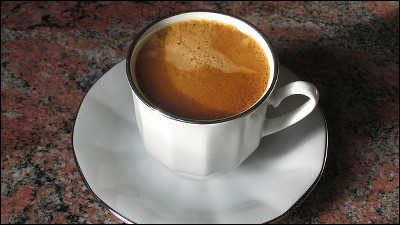What is the coffee extraction method that can ingest caffeine most efficiently?

Everyone should have an image that caffeine is coffee and coffee is caffeine, but there are various types of coffee beans and extraction methods, and the caffeine concentration that can be ingested varies depending on each. Emma Beckett, a lecturer in food science and human nutrition at the University of Newcastle, explained how to extract the most caffeine or the most efficient way to extract caffeine.
Plunger, espresso, filter? Just because your coffee is bitter, doesn't mean it's 'stronger'
Even if you take a single coffee bean, there are various extraction methods such as drip coffee that grinds the beans and strains them with filter paper, espresso coffee that extracts at once with high pressure, and cold brew (cold brew) that soaks coffee in low temperature water. exists. According to Mr. Beckett, the one with the highest caffeine concentration per ml is 'espresso'.
Caffeine that can be extracted with mocha pot or cold brew that applies pressure longer than espresso is about 1.25 mg per 1 ml, while caffeine that can be extracted with espresso is said to be up to 4.2 mg per 1 ml. This is because the beans used for espresso are finely ground, so the water-soluble caffeine is easily extracted by pressure.
However, these comparisons are only theoretical, and you will see slightly different results based on actual coffee consumption situations. This is because espresso basically has a small amount of coffee that can be extracted from beans, and the `` caffeine amount per cup '' tends to be less than others.

Comparing the amount of caffeine per cup, a typical espresso is 30 ml and caffeine is 122 mg, while cold brew is 120 ml and can extract 149 mg of caffeine. . In addition, one cup of mocha pot is 40ml and caffeine is 51mg, one cup of
The French press, which filters through a metal filter, is known as a way to enjoy the oils that would otherwise be absorbed by a paper filter. However, the French press is less than other extraction methods when compared with `` caffeine amount per 1 g of coffee '', and while others average 10.5 mg of caffeine per 1 g, the French press has 6.9 mg of caffeine per 1 g. It is said that only it is included.

'The caffeine content is only one part of the coffee,' Beckett said. In addition to the oils mentioned above, thousands of other compounds make up the aroma and flavor, and caffeine is not the only characteristic, he says. ``Even if it's caffeine, everyone feels it differently, so it's up to the individual to decide how to brew it,'' he concluded.
Related Posts:
in Food, Posted by log1p_kr







